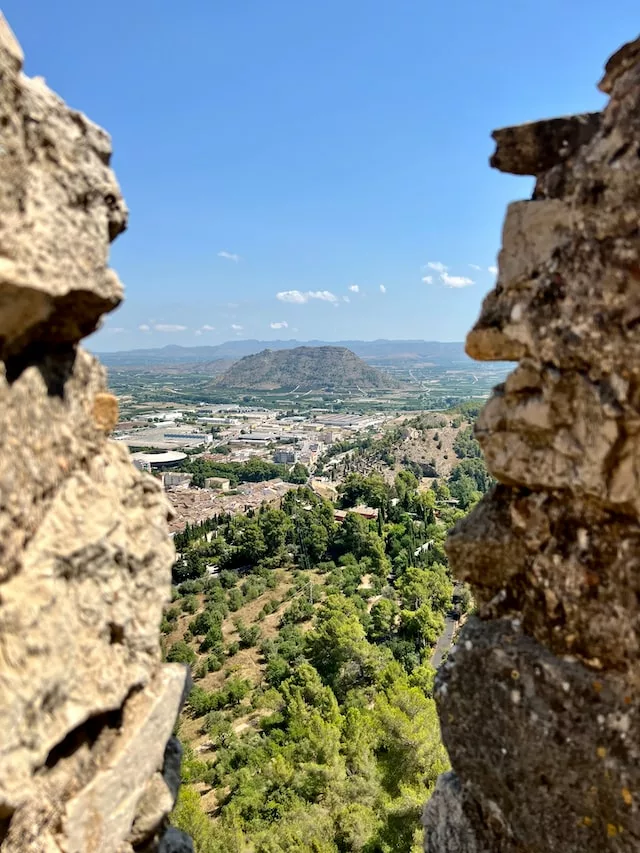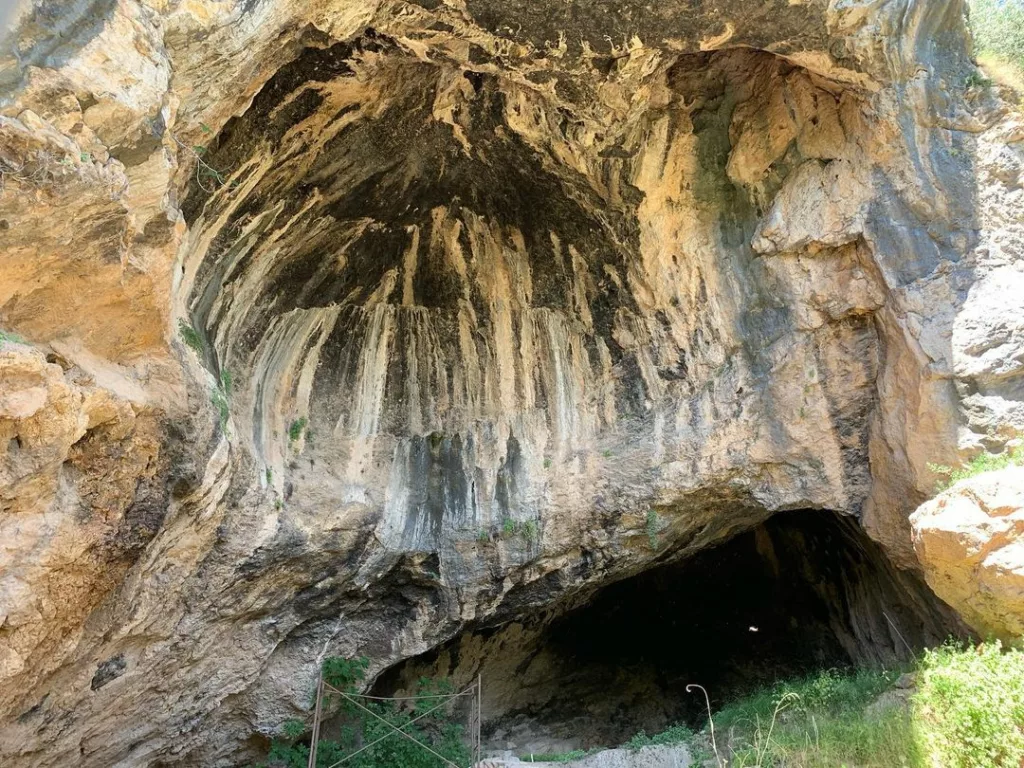About My Day trip to Xativa, Spain
Written by Nadia Podrabinek
Hello, my name is Nadia. I usually write about traveling (there are so many places to fit all the lifestyles), relocation, and living in a foreign country (adapting to a different culture). My travels stretch beyond Spain, with journeys to the US, Italy, Norway, Portugal, and France. Relocating to Spain in 2018, I lived in cities from Barcelona to Madrid, currently calling Valencia home. Follow me on Twitter, Facebook, Instagram, or LinkedIn! ... show more

Xátiva is a beautiful historic city with a castle, a must-visit for those looking to explore the history and culture of the autonomous Valencian Community. A little more than 39 miles (52 km) from Valencia, Xátiva ('сhaah-tee-vah) hides many charms and boasts an impressive castle with stunning views of the surrounding area.
Xativa also has an eclectic collection of historical figures and architecture spanning several centuries, including churches, convents, and fountains that tell tales about sieges and the overthrow of kings.
The city is the birthplace of Borja Popes, famous for its artistic and cultural heritage, as well as Joaquin Lorenzo Villanueva and his brother Jaime; painter José Ribera; Francisco de Paula Martí, inventor of shorthand and the fountain pen; San Jacinto Castañeda, etc.
It was also declared a Historic-Artistic Site in 1982 due to the immense wealth of its old town in general and to the particular significance of its most emblematic monuments.
Xativa is a must-see destination on any day trip from Valencia or Alicante!
Things to do in Xativa
1. Visit the Castle of Xativa, a 9th-century Moorish fortress



Actually, there are two castles in Xativa. Located in the mountain range, above Xàtiva, due to the city’s strategic location, it has been the scene and testimony of numerous conflicts.
The first castle (Castell Menor) is the oldest one, Iberian and Roman, seated on the steep wall of Penya Roja hill. Facing east, it offers a beautiful panoramic view of the valley of Bixquert.
The successive cultures that have populated these lands were expanding and fortifying them. It was already important during the campaigns of Hannibal and in the period of Al-Andalus. It was later important, in times of the Kingdom of Valencia, in the Castile wars against, the wars of Germanías and the Succession, and as a prison for illustrious convicts.
The second castle is Castell Major, built later in the medieval period. It is the largest and best-preserved part. With imposing walls, it faces west. After the Christian conquest by Jaume I, it became the main defensive fortress on the road between Castile and the capital of the Kingdom of Valencia.


In the Castell Major, you will find spaces and rooms that allow us to recreate the daily life in the fortress. See entrance gates, watchtowers, water storage for the guard, chapel, and cells, and take some Instagram-worthy photos.
Opening hours: Tuesday to Sunday, from 10 am to 6 pm.
Tickets: €6 for adults, €0 for children under 7 years. Due to high demand and the limited number of daily visitors, buying tickets online in advance is recommended (only 10% of the tickets will go on sale at the box office). The tickets include a visit to the castle and the municipal museums in the city’s historic center. I recommend arriving at the monument in advance, especially on weekends and holidays.
Instagram Review
2. See the Collegiate Basilica of Xàtiva (La Seu)


It is the most emblematic building in the old town, visible from anywhere in the surroundings. It also has been declared an Asset of Cultural Interest.
Its construction began in the late 16th century on the site of the old mosque, took more than four centuries, and is still unfinished today.
There is also a Collegiate Museum that contains a collection of religious art and outstanding pieces of Gothic painting and goldsmithing.
3. See Royal Hospital

It is an iconic building, representing the Valencian architecture of the 16th century. Founded as a royal hospital by Jaume I in 1244 and rebuilt centuries later, it is one of the most beautiful monuments in Xàtiva.
4. View artwork at the Museum of Fine Arts in Xativa


The splendid building, built in the mid-18th century, houses this Museo de Bellas Artes, which became one of the references of Valencian art. It has a baroque façade and the heraldic coat of arms of the founder of the educational institution – Archbishop Mayoral – and remained active until the end of the last century.
Its rehabilitation and adaptation as a museum have represented one of the most emblematic cultural projects of the city in recent years.
The museum houses one of the most essential public pictorial collections in the Valencian Community, with works by Ribera, Goya, Vicente López, Santiago Rusiñol, Benlliure, and Antoni Miró. It also exhibits outstanding pieces of sculpture and stonework.
It is worth mentioning the iconic portrait of Philip V, inverted upside down, in revenge for ordering the burning of Xàtiva in 1707.
5. Take a guided tour through the streets of Xativa


You will explore the historic center with its medieval buildings and monuments, including the Valencian Gothic-style fountain in Plaza de la Trinidad, Collegiate Church of Santa Maria (erected over an ancient mosque), Xátiva Castle, Alexander VI Square, St Peter’s Church, and Market Square.
See the details for guided tour.
6. Visit Xàtiva Market Square
As with any other European town, the market square is a point of the city that “connects the axis” of the streets surrounding the square, opening the way to other points of interest.
7. Explore the town yourself
See other beautiful squares: Plaça de la Bassa, Plaça de Sant Pere, and Plaça de la Seu. People are always out and about relaxing, having coffee and food in busy bars. There are plenty of shops and other tourist attractions, such as festivals throughout the year.
8. See Sant Domènec church (Sant Feliu)


This former Dominican convent was built between the 13th and 14th centuries at the behest of King James II when Xàtiva was the second most important town of the Kingdom. In fact, in medieval times, the convent was an essential focus of cultural diffusion. Among its rooms were the enormous Cistercian refectory and the slender chapter house.
After the confiscation of ecclesiastical property in 1837, the architectural ensemble suffered from progressive demolition, and only the church survived.
9. Hike up to the Cova Negra




Take the Cova Negra route, which leads to the banks of the Albaida River through cypress groves, high cliffs, and natural water springs. You can get there by bus or car, and you have free admission to the park.
A walk through the area of the Cova Negra will lead you to discover the contrast between the riverside and mountain vegetation of the Valencia province.
In the broadest meander of the Albaida river, you will find the archaeological site of the Cova Negra, home of the Neanderthal man in the Paleolithic. At that height, there is a viewpoint with beautiful views of the river Albaida.
The cave is named for the dark color of its walls. In its interior human remains and paintings have been found. The Almodí Museum exhibits an exact reproduction of a parietal bone discovered in the cave from that period.
How to get to the Cova Negra by car
Take the CV-610 road from Xàtiva towards Genovés; before the second traffic circle at the entrance to the town, turn right towards the village of Alboi. At the entrance, make a sharp turn to the left towards “La chopera de Alboi.” After following the road for 2 kilometers, you will reach the parking area, with room for at least 40 vehicles, located on the right bank of the Albaida River.
Useful Video
How to get to Xativa
You can get there by car (from Valencia, you can take the A-36, and from Alicante, the N-340) or by train, which stops at the station of the same name.
Best time to visit
The climate is typically Mediterranean, with mild, breezy winters followed by long, hot summers. Autumn often sees short rains, unlikely to spoil the planned trip. If you want to avoid any weather surprises, spring is the best time to see Xativa.
Where to stay in Xativa
Mont-Sant



The ancient castle is hidden among the orange trees that cast shadows on the terrace where you can escape the hot midday sun. The scent of jasmine and saffron is wafting everywhere. All 16 rooms are individually decorated, with windows looking out over blooming gardens and mountains.
Aldomar
This cozy 18th-century house offers guests a relaxing atmosphere in elegantly furnished rooms and a large beautiful garden.
Bienvenidos Rooms Xàtiva
Where to eat in Xativa
El Cullerot
Lovely traditional food, friendly service. Plaça del Mercat, 10, Xàtiva (See on the map).
Casa la Abuela
Here you can taste the typical dishes of Valencian cuisine: rice fried with spices and meat, baked pumpkin and fish, farmer’s cheese, and light wine. All dishes are made exclusively from local produce. Calle de La Reina, 17, Xátiva (See on the map).
La Talaia del Castell
A restaurant with excellent view on the castle and the valley. Subida al Castillo, 34, Xàtiva (See on the map).
See also
For the additional tourist information: xativaturismo.com/en/.
My Other Posts About Valencia, Spain
- Valencia’s Luxury Accommodations
- Where to Stay in Valencia, Spain
- Why Valencia Should Be on Your Travel List?
